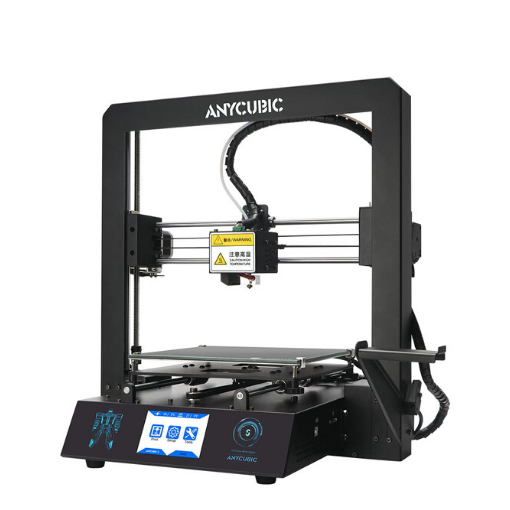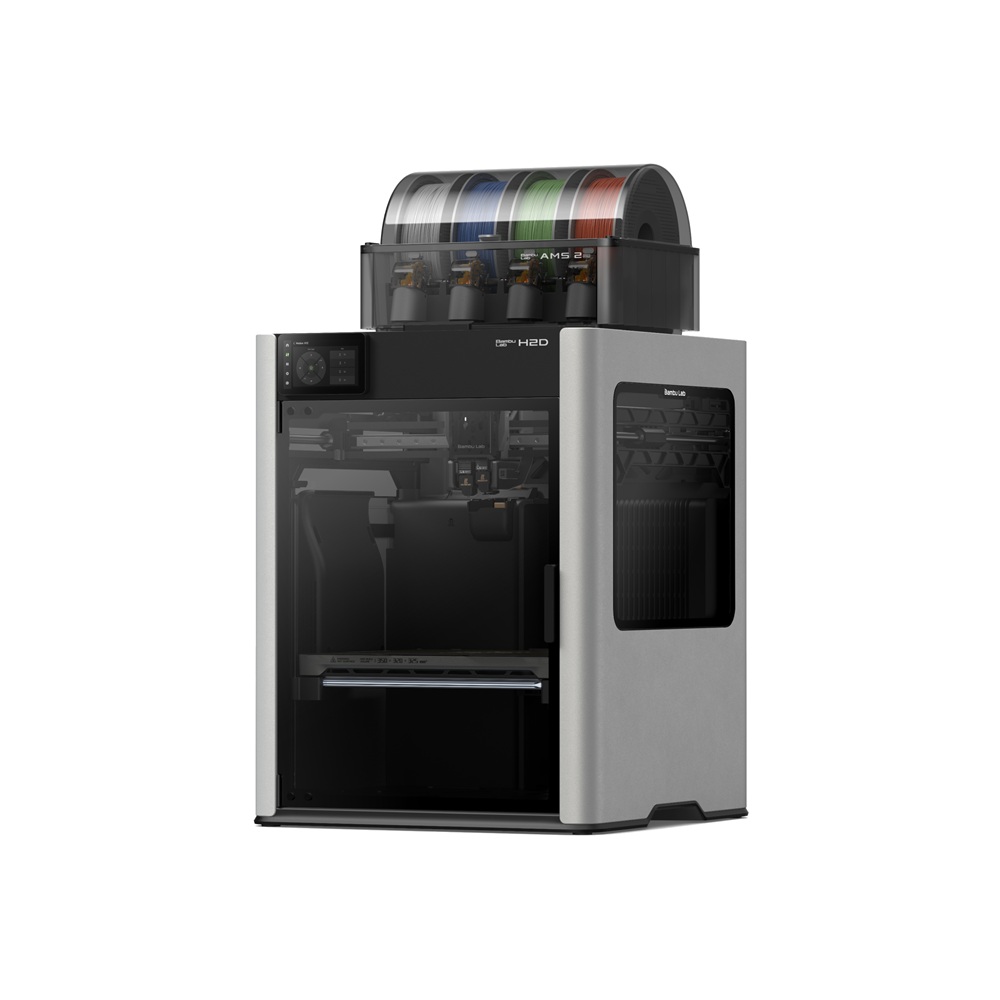Compare Mega S vs H2D
Comparison between the best 3D printers
Choose the best 3D printer at the best price. The cheapest 3D printers are here.
Buy a 3D printer here with 3D Fila.
 |
 |
|
| Model | Mega S |
H2D |
| Printing Material | Filament | Filament |
| Buy Filament for Anycubic Mega S | Buy Filament forBambu Lab H2D | |
| Estimated price | $149,00 | $1899,00 |
| Manufacturer | Anycubic | Bambu Lab |
| Release Year | 2019 | 2025 |
| Print Volume [mm] | 210x210x205 | 350x320x325 |
| Printer Size [mm] | 405x410x452 | 492x514x626 |
| Weight [kg] | 14,5 | 42,3 |
| Power Loss Recovery | YES | YES |
| Enclosed printer | NO | YES |
| Bed Leveling | Manual | Automatic |
| Filament End Sensor | YES | YES |
| Bed type | Heated | Heated |
| Power supply system | Bowden | Direct Drive |
| Standard nozzle | 0,4 | 0,4 |
| Maximum Nozzle Temperature [°C] | 260 | 350 |
| Maximum Bed Temperature [°C] | 110 | 120 |
| Maximum printing speed [mm/s] | 100 | 600 |
| Filament holder | YES | YES |
| Camera for supervision | NO | NO |
| Recommended filaments | PLA, TPU, ABS, PETG | PLA, PETG, ABS, ASA, TPU, PVA, Nylon (PA) |
| Recommended slicers | Cura, Simplify, Slic3r | Bambu Studio |
| Maximum Resolution [mm] | 0,1 | 0,01 |
| Processor | 8 bits | |
| Display | Touchscreen TFT 2,8'' | Touchscreen 5'' |
| Power Supply | 12V / 300W | |
| Connectivity | SD / USB | Wifi, Bambu bus, Cartão SD |
| Operating systems | Windows, Mac, Linux | Windows, Mac, Linux |
| Date of registration in the system | 2021-04-15 | 2025-03-31 |
| Release date | 2019 | 2025 |
| Extra features | The Anycubic Mega S offers a printing platform with excellent adhesion, easy removal after cooling. It has a filament sensor for a better experience with flexible materials and a multilingual and intuitive color touchscreen. Assembly is quick, requiring only 8 screws and 3 connections. It has a large build volume (210 x 210 x 205 mm), high positioning accuracy and supports a variety of materials, including TPU, PLA, ABS and wood. It stands out for its solid metal structure, superior stability, high-quality printing with layer resolution of up to 50 microns, Ultrabase for easy adhesion and removal of parts, resumption of printing after power outage, high-quality extruder for flexible filaments, suspended filament support and stable structure that reduces shaking, improving printing quality. | Bambu Labs H2D combines high-speed 3D printing with a chamber heated up to 65 °C, dual extrusion with automatic nozzle switching, an AMS for filament drying and exchange, and AI sensors that detect failures. It offers optional laser and digital cutting capabilities, features intelligent calibration through computer vision, vibration control, enhanced fire safety, and real-time camera monitoring. |
| Support for multiple colors and materials (AMS and CFS) | NO | YES |
Notes * |
||
| Cost-benefit | 7 / 10 | 7 / 10 |
| Hardware | 2 / 10 | 7.2 / 10 |
| Tela | . | . |
| Print volume | 3 / 10 | 4 / 10 |
| Performance | 1 / 10 | 5 / 10 |
Conclusion |
| In comparing the Anycubic Mega S and the Bambu Lab H2D, we see two distinct 3D printers targeting different user needs and budgets. The Mega S stands out as a cost-effective option for hobbyists and those new to 3D printing, offering a solid build quality, ease of use, and a variety of material compatibility. Its manual bed leveling and smaller print volume make it suitable for simpler projects, while features like a filament sensor and power loss recovery add to its user-friendly appeal. On the other hand, the H2D is a more advanced, feature-rich printer designed for professionals or serious enthusiasts, justifying its higher price point. Its significant print volume, automatic bed leveling, and ability to handle a wider range of materials combined with cutting-edge technology such as dual extrusion and AI sensors provide superior performance and capabilities. The H2D also offers enhanced safety features and connectivity options, catering to users looking for innovation and efficiency in their workflows. Ultimately, the choice between these two models depends on the user’s specific needs and budget. Those seeking an entry-level printer with straightforward functionality may find the Mega S to be the better fit, whereas users ready to invest more for advanced features and higher performance will likely prefer the Bambu Lab H2D. |

